How a JRPG grind taught us the value of mortality

Dragon Quest IX is a matter of life and death. In its structures it marks the passing and rebirth of a genre, or the realisation that the many ancient traditions enshrined in the series’ past must be remade in new forms. In its stories it wants to explore the effects and value of human finitude – and also the eternal role of the traditional JRPG hero.
Modern sensibilities are at the forefront of the game’s design. Random battles are replaced by visible monsters roaming the field, sidequests are clearly signposted and tracked, and combat is swift and accessible. Then there’s the wireless co-op play, whose introduction cannot but make aspects of the old formula obsolete. It all creates a sense of freshness, whether joining another player’s adventure, accessing regular DLC updates of quests and rare items, or simply going solo through the main quest. And surprisingly these changes serve to expand, rather than dilute, the narrative scope of the game.
The clearest risk Dragon Quest IX takes in realising its structural adjustment is to sacrifice the notion of the classic JRPG party. In accommodating the option for players to take their personalised avatars into each other’s worlds, there’s no room for the usual cast of misfit personalities and their accompanying backstories. Instead, the gang that goes into turn-based battle is made up of human players or hired help, neither of which can be written into the story. Even the user-defined main character has to remain an empty cipher, and is less substantial than a typical silent protagonist.
Bu hikaye Edge dergisinin May 2019 sayısından alınmıştır.
Start your 7-day Magzter GOLD free trial to access thousands of curated premium stories, and 9,000+ magazines and newspapers.
Already a subscriber ? Giriş Yap
Bu hikaye Edge dergisinin May 2019 sayısından alınmıştır.
Start your 7-day Magzter GOLD free trial to access thousands of curated premium stories, and 9,000+ magazines and newspapers.
Already a subscriber? Giriş Yap

BONAPARTE: A MECHANIZED REVOLUTION
No sooner have we stepped into the boots of royal guard Bonaparte than we’re faced with a life-altering decision.

TOWERS OF AGHASBA
Watch Towers Of Aghasba in action and it feels vast. Given your activities range from deepwater dives to climbing up cliffs or lumbering beasts, and from nurturing plants or building settlements to pinging arrows at the undead, it’s hard to get a bead on the game’s limits.

THE STONE OF MADNESS
The makers of Blasphemous return to religion and insanity
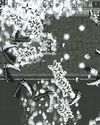
Vampire Survivors
As Vampire Survivors expanded through early access and then its two first DLCs, it gained arenas, characters and weapons, but the formula remained unchanged.

Devil May Cry
The Resident Evil 4 that never was, and the Soulslike precursor we never saw coming
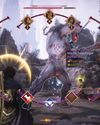
Dragon Age: The Veilguard
With Dragon Age: The Veilguard, BioWare has made a deeply self-conscious game, visibly inspired by some of the best-loved ideas from Dragon Age and Mass Effect.
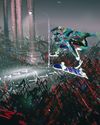
SKATE STORY
Hades is a halfpipe

SID MEIER'S CIVILIZATION VII
Firaxis rethinks who makes history, and how it unfolds
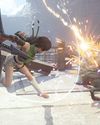
FINAL FANTASY VII: REBIRTH
Remaking an iconic game was daunting enough then the developers faced the difficult second entry
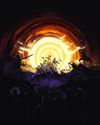
THUNDER LOTUS
How Spirit farer's developer tripled in size without tearing itself apart